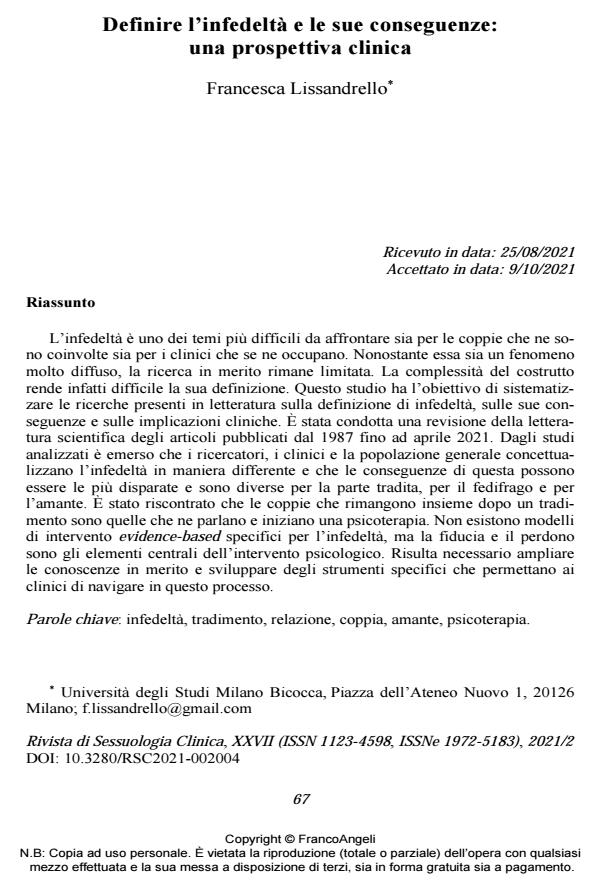Defining infidelity and its consequences: a clinical view
Journal title RIVISTA DI SESSUOLOGIA CLINICA
Author/s Francesca Lissandrello
Publishing Year 2021 Issue 2021/2
Language Italian Pages 19 P. 67-85 File size 196 KB
DOI 10.3280/RSC2021-002004
DOI is like a bar code for intellectual property: to have more infomation
click here
Below, you can see the article first page
If you want to buy this article in PDF format, you can do it, following the instructions to buy download credits

FrancoAngeli is member of Publishers International Linking Association, Inc (PILA), a not-for-profit association which run the CrossRef service enabling links to and from online scholarly content.
Infidelity is a challenging topic for both couples involved and clinicians who take care of them. Even though it is a spreading phenomenon, research thereon is still limited. The complexity of the construct makes it difficult to define. This study aims to systematize the researches available in the literature on infidelity defini-tion, consequences, and clinical implications. It was carried out a scientific litera-ture review of articles published from 1987 until April 2021. The analysed studies showed that researchers, clinicians, and laic people conceptualize infidelity in dif-ferent ways and the consequences of infidelity can be extremely varied and they are distinct for the betrayed partner, the philandering, and the lover. It was demon-strated that couples who remain together after an affair are those who disclose that and engage themselves in therapy. There are no evidence-based interventions specific for infidelity, but it was showed that trust and forgiveness are central ele-ments of psychological interventions. Expanding knowledge and developing spe-cific instruments for clinicians is necessary to help them to navigate this process.
Keywords: infidelity, affairs, relationship, couple, lover, psychotherapy
Francesca Lissandrello, Definire l’infedeltà e le sue conseguenze: una prospettiva clinica in "RIVISTA DI SESSUOLOGIA CLINICA" 2/2021, pp 67-85, DOI: 10.3280/RSC2021-002004